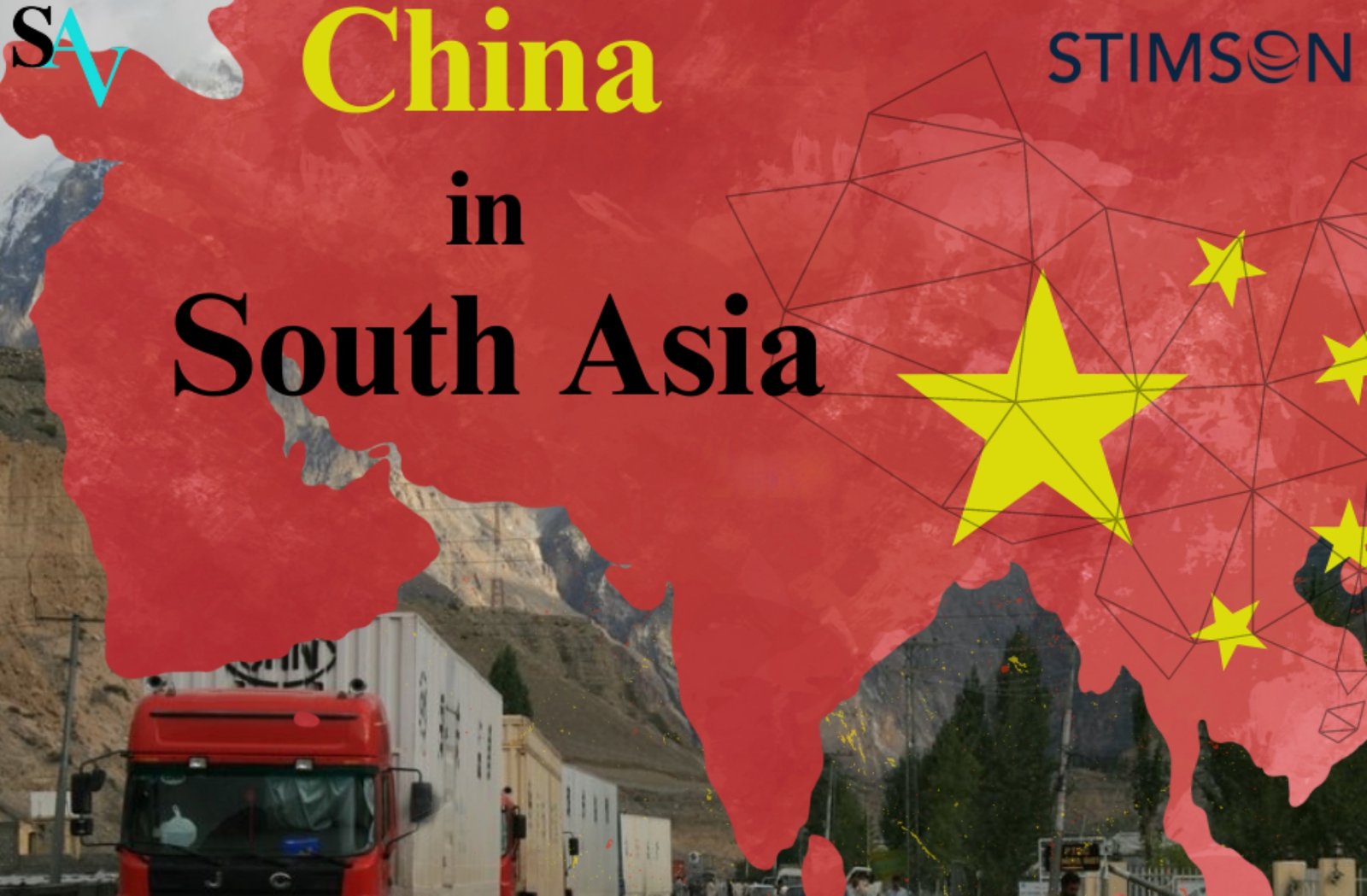China’s rapid rise in South Asia since the 2000s, with deepening and expanding engagements with all countries is now felt in every corner of the world. China’s growing economic capabilities and interdependence are pushing it to protect and promote its expanding interests abroad through a combination of traditional and new instruments. China’s influence in South Asia transcends the tangible infrastructural projects of the Belt and Road Initiative (BRI). In addition to its economic endeavors, China employs a sophisticated array of soft power tactics to shape perceptions, influence narratives, and strengthen bilateral ties in the region. (Xavier, C., & Jacob, J.T, 2023).
The infrastructure projects under the Belt and Road Initiative (BRI) might be the most visible aspect of China’s presence, reflecting its financial might through considerable investments, development assistance, and increased trade. But there are more subtle or even hidden aspects of Chinese influence. China’s diplomats, senior Communist Party of China (CPC) officials, and its media have engaged in multiple projects to exercise soft power, shape narratives, intervene in domestic politics, and mediate bilateral disputes. The nature and scale of these efforts may vary depending on the political and economic environment in the host countries, but increasingly, China is willing to get involved despite challenges, creating opportunities for itself to actively shape this geopolitical region. (Xavier, C., & Jacob, J.T, 2023).
This comprehensive analysis delves into the intricacies of China’s soft power initiatives in South Asia, shedding light on its nuanced approach to diplomacy and influence.
Buddhism as a Soft Power Tool
China strategically leverages Buddhism as a conduit for cultural diplomacy and regional engagement in South Asia. Recognizing the historical and cultural significance of Buddhism in countries like Thailand, Myanmar, and Sri Lanka, China positions itself as a champion of Buddhist values and traditions. By fostering connections with Buddhist communities and promoting cultural exchanges, China seeks to cultivate goodwill and bolster its influence within the region. However, the instrumentalization of Buddhism for geopolitical ends has elicited mixed reactions, with some viewing China’s overtures with skepticism amid concerns over religious and cultural imperialism (Wuthnow, 2008).
Confucius Institutes and Academic Influence
Dr. Srikanth Kondapalli’s scholarly work generally conclude that China’s soft power initiatives, including Confucius Institutes, play a significant role in promoting cultural exchange, educational cooperation, and people-to-people ties in South Asia. He emphasizes the positive contributions of these initiatives to enhancing mutual understanding between China and South Asian countries. Kondapalli also acknowledges the potential challenges and criticisms surrounding Chinese soft power efforts but argues that overall, they contribute to the development of closer relations and cooperation in the region. (Dr. Srikanth, 2015)
Peterson, R. in “Outsourced to China: Confucius Institutes and soft power in American higher education” writes that the establishment of Confucius Institutes serves as a cornerstone of China’s soft power strategy, particularly in the realm of education and cultural exchange. While ostensibly aimed at promoting Chinese language and culture, these institutes have faced criticism for their perceived infringement on academic freedom and propagation of state-sanctioned narratives. Nevertheless, their proliferation in South Asian countries underscores China’s concerted efforts to extend its influence through educational channels. Responses from host countries, such as Australia and the United States, reflect growing scrutiny and measures to mitigate potential risks associated with Chinese academic influence, highlighting the complex interplay between soft power and national security concerns. (Peterson, 2017)
The impact of Confucius institutes cannot be neglected in South Asian countries as Dr. Jagannath Panda’s research suggests that Confucius Institutes in South Asia play a significant role in promoting cultural understanding and educational exchange between China and South Asian countries. He argues that these institutes contribute to the development of language skills, cultural awareness, and people-to-people ties, which ultimately help to strengthen diplomatic relations and mutual cooperation between China and South Asian nations. (Dr.Jagannath, 2022).
These scholarly works conclude the importance of Confucius Institutes, cultural diplomacy and educational exchange in China’s broader strategy of engagement with South Asia.
Education as a Soft Power Avenue
China’s ascendancy as an educational destination is evidenced by the increasing influx of international students from South Asian countries. The appeal of Chinese universities lies not only in academic excellence but also in the opportunities for cross-cultural exchange and exposure to China’s socio-political landscape. Countries like Pakistan and India contribute significantly to this trend, driven by factors such as scholarships, academic partnerships, and the growing demand for Chinese language proficiency. Among countries that made it to the top 15 in 2017 from South Asia were Pakistan and India, with 18,626 and 18,717 students respectively. (Ministry of Education, 2016). China’s investment in educational infrastructure and scholarship programs underscores its long-term vision of nurturing global talent and fostering mutual understanding between nations.
Social Media and Information Strategy
According to Bandurski, in an era dominated by digital communication, China has adapted its information strategy to encompass social media platforms as a means of shaping public opinion both domestically and abroad. President Xi Jinping’s directive to “tell China’s story well” underscores the importance of narrative control and image projection in the digital age. Through strategic messaging and content dissemination, China seeks to amplify its voice and counter negative narratives, while also leveraging social media as a tool for cultural diplomacy and people-to-people engagement. However, the efficacy of China’s social media outreach in South Asia remains subject to local dynamics and perceptions, with concerns over censorship and propaganda shaping public reception. (Bandurski, 2020)
Example of Cultural Diplomacy in Nepal
China’s cultural diplomacy efforts in Nepal exemplify its commitment to fostering grassroots-level engagement and people-to-people exchanges. Initiatives such as cultural festivals, language seminars, and educational programs serve as conduits for strengthening bilateral ties and enhancing mutual understanding. Ambassadorial visits and cultural events underscore China’s proactive approach to cultivating soft power in Nepal, aligning with President Xi Jinping’s vision of a “community of common destiny” rooted in cultural cooperation and mutual prosperity. Despite geopolitical complexities and regional dynamics, China’s cultural outreach in Nepal reflects a long-term strategy aimed at consolidating its influence and forging enduring partnerships in South Asia (Chinese Embassy in Nepal, 2018).
Media Influence in India
China’s media outreach in India constitutes a strategic effort to shape public perception and advance its narrative in the regional discourse. Through advertorials and sponsored content in leading newspapers, China endeavors to showcase its achievements, commemorate historical milestones, and highlight areas of bilateral cooperation. However, these initiatives have been met with skepticism and scrutiny, amidst concerns over transparency, objectivity, and the propagation of state-sponsored narratives. Nevertheless, China’s persistent media presence in India underscores its commitment to influencing public opinion and shaping the narrative landscape in South Asia (Bagree, 2021).
Conclusion
The above information is synthesized after a meticulous analysis of numerous articles examining Chinese soft diplomacy tactics in South Asian countries. However, as a Pakistani student residing in China for the past 2-3 years, I am compelled to offer a personal perspective. From my vantage point, China’s soft diplomacy initiatives, coupled with the Belt and Road Initiative (BRI), represent a transformative force for smaller South Asian countries. As an Asian observer, I have witnessed the consequences of reliance on aid and support from Western nations, particularly the United States, which often culminates in unsustainable debt burdens and stigmatization. In contrast, amidst intense criticism from the US and India, Pakistan has experienced a beacon of hope through Chinese initiatives such as the BRI projects and the China-Pakistan Economic Corridor (CPEC). These endeavors have not only sparked optimism for Pakistan’s future but have also engendered a sense of partnership and mutual benefit between China and South Asian nations. As such, I contend that Chinese soft diplomacy and BRI initiatives offer a pragmatic and promising pathway for the socio-economic development of South Asian countries, transcending geopolitical rivalries and fostering inclusive growth and stability in the region.


